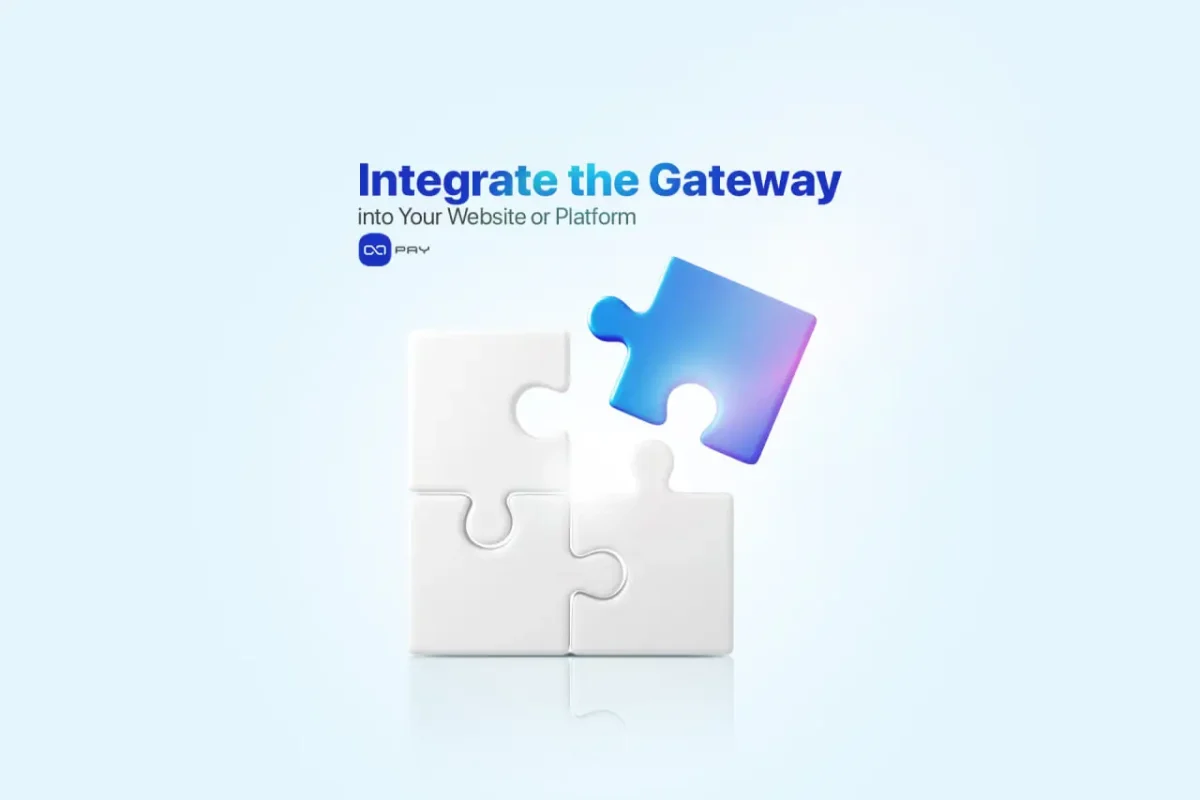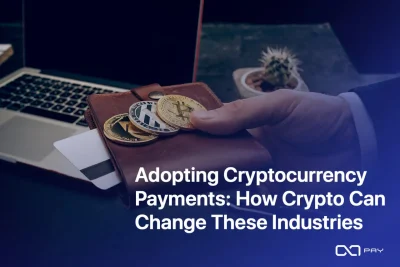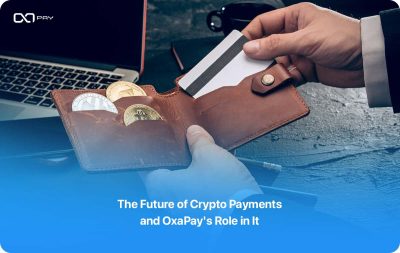接受加密货币不仅仅是一种趋势,更是企业运营方式的一次转变。仅仅添加一个“使用加密货币支付”按钮是不够的。真正的问题是:如何构建一个…… 可靠的加密货币支付系统 每次都有效?正因如此,许多企业现在都在问一个更实际的问题:如何以一种设置快速、易于管理且客户信赖的方式接受加密货币支付?本指南正是要解答这个问题。.
您无需成为加密货币专家或经营科技公司即可开始接受加密货币支付。任何企业都可以做到,而且通常比想象中要容易。本指南将逐步讲解如何接受加密货币支付,从选择合适的支付网关到流畅、安全、大规模地处理交易。
第一步:选择适合您业务的加密货币支付网关
学习如何接受加密货币支付从这里开始。 选择合适的加密货币网关. 不合适的配置可能会导致延误、高额费用或糟糕的体验。.
1. 明确你的标准
在选择网关之前,首先要了解您的业务具体需要什么,以及哪种解决方案最能支持您的商业模式。要分层思考:
A) 您的企业概况和内部需求:
- 您希望接受哪些加密货币付款?
- 您需要自动转换为稳定币还是法币?
- 结算速度对您的运营至关重要吗?
- 您是否正在寻找无需 KYC 验证即可快速注册的方案?
- 您的团队能够实现何种程度的技术集成?
B) 与网关服务结构的兼容性:
- 该支付网关提供哪种类型的服务?它是基于插件的、API优先的,还是支持POS功能的?
- 该平台是否符合您的业务模式(零售、SaaS、电子商务、捐赠型、订阅型或混合型)?
- 它是基于云端的、自托管的还是可定制的?
- 它提供的功能是否符合您销售和交付产品或服务的方式?
C) 支持可靠性和增长的运营特性:
- 该支付网关是否提供实时支付检测和自动交易处理?
- 对于延迟付款或部分付款,是否有相应的保障措施?
- 该系统能否在不影响速度或可靠性的前提下,随着交易量的增加而扩展?
- 支付方式(包括路由、结算和转换)是否有灵活性?
- 您能否控制和监控 API 访问、系统正常运行时间和错误处理等关键方面?
💡 提示: 强大的运营层是让加密货币支付成为您业务可靠组成部分的关键。确保支付网关不仅能够收款,还能智能地管理这些款项。.
2. 基于实际业务因素比较网关
明确业务需求后,下一步就是评估不同网关的匹配度。不要轻信表面宣传,要深入了解每个平台在服务类型、集成灵活性、费用结构和实际性能方面的实际表现。目标不是找到“最先进”的解决方案,而是找到最适合您特定运营模式的方案。.
请使用下表比较主流加密货币支付网关的共同功能:
| 特征/因素 | OxaPay | 比特支付 | Coinbase Commerce |
| 服务类型 | API、插件、POS | API、插件 | API,简洁的用户界面 |
| KYC 要求 | 无需KYC | 完整KYC | 提款需要进行KYC认证 |
| 币种支持 | 20 多种主要硬币 | 15+(BTC、ETH、稳定币) | 100+ 包括 USDC、SHIB、DAI |
| 一体化 | API + WooCommerce、WHMCS、Blesta、POS | API + Woo、Shopify、Magento | API + WooCommerce 插件 |
| 自动结算 | 加密货币或稳定币 | 颁布法令 | 致美国财政部 |
| 错误处理 | 少付工资追回、回访 | 有限的 | 基本的 |
| 费用结构 | 0.4% 平坦 | 分层、可变 | 1% 固定费用 + 网络费用 |
| 最适合 | 线上线下业务(提供多种服务) | 大型企业 | 可扩展的电子商务企业 |
✅ 致决策者:
有些支付网关只提供基础插件,而有些则提供完整的 API 文档和开发者工具。如果您的平台是定制开发的,或者您需要特定的逻辑(例如部分付款、发票过期或多语言发票),请优先选择 API 和文档支持强大的支付网关。.

步骤 2:将网关集成到您的网站或平台中
选定支付网关后,下一步就是集成,而集成过程中设置速度和兼容性至关重要。加密货币支付网关通常提供三种主要的集成方式,具体取决于您的业务结构和技术能力。.
1. 注册并获取 API 访问权限
注册后,您将收到 API 密钥和访问凭证。这些密钥和凭证会将您的商店或应用程序连接到支付网关,使您能够生成发票、跟踪付款和接收通知。.
2. 选择积分方法
您接受加密货币支付的方式取决于您的设置。选项包括:
- 无代码插件 (例如,WooCommerce、WHMCS、Blesta)
- 自定义 API 集成 适用于网页或移动应用程序
- 基于网络的POS终端 用于现场支付
安装过程中,您通常会:
⏱ 快速设置示例: 安装 OxaPay WooCommerce 插件 只需不到 15 分钟,只需将您的 API 密钥粘贴到设置中即可,无需任何编码。.
🧩 API集成预估: 对于定制系统,集成核心端点(发票创建、状态更新、回调)通常需要 50 到 100 行代码,具体取决于架构。
📦 插件集成——实用指南
插件非常适合 WooCommerce 或 WHMCS 等平台。它们提供即插即用的设置,配置极少,只需激活、连接 API 密钥,即可开始接收加密货币付款。这种方法非常适合那些追求速度而又不想过于复杂的企业。.
💻 API 集成 – 开发者说明
自定义 API 集成最适合拥有自有平台或移动应用的企业。您可以精确定义发票的创建方式、回调的处理方式以及付款后的后续操作。在 Webhook 回调中使用 HMAC 签名验证,以确保真实性并防止篡改。.
🛒 POS集成——实际应用技巧
基于网络的POS系统无需任何硬件即可支持线下加密货币支付。员工只需输入价格,生成实时发票,然后向顾客出示二维码即可。交易可在几秒钟内确认,无需任何技术设置。非常适合零售店、服务店、咖啡馆和活动摊位。.
3. 上线前进行测试
在接受实时付款之前:
• 测试发票创建和付款检测
• 模拟过期或少付的发票
• 确保回调函数正常工作并正确触发您的订单逻辑。
🔧 技术说明:回调函数的工作原理
当链上确认付款后,支付网关会向您的回调 URL 发送一个 POST 请求(webhook)。此请求包含发票数据和数字签名。您应使用 API 密钥验证此签名,以确保其有效且安全,然后再完成订单。.
步骤 3:像专业人士一样处理交易
当顾客选择“使用加密货币支付”, 以下是幕后发生的事情:
- 发票已生成您的系统会生成一张包含金额、地址和时间的发票。.
- 顾客付费他们通过钱包转账或扫描二维码转账。.
- 区块链证实网络会验证支付,这可能需要几秒钟或几分钟,具体取决于币种。.
- 网关验证并通知确认后,网关会向您发送回拨消息或在您的控制面板中显示确认信息。.
- 订单已完成您的系统根据需要进行发货、交付或提供访问权限。.
📌 区块链洞察:为什么确认很重要
每笔加密货币交易在最终确认前都会经过网络验证。区块链确认在商家安全无争议地接受加密货币支付方面发挥着关键作用。大多数支付网关(包括 OxaPay)会等待 1 到 3 次确认(具体次数取决于币种),以确保支付不可逆转。.
⚠️ 处理延迟和错误:
如果由于网络拥堵导致交易延迟,或者客户少付了款项,OxaPay 会自动检测到问题。您可以使用其“少付款项追回”功能通知用户,并让他们补足差额,无需重新开始交易。.
🔍 用户体验技巧
在发票页面显示实时倒计时和状态更新。这可以让用户放心,他们的交易正在处理中,并有助于防止在确认过程中放弃付款。.
⚠️ 支付错误提示
如果交易失败或过期,务必提供重试选项或允许客户选择其他加密货币。避免迫使他们重新开始整个结账流程。.

第四步:确保加密操作流畅、安全且可扩展
设置和接受加密货币支付仅仅是开始。为了确保长期可靠性,您的支付系统需要易于管理、安全可靠,并且能够随着业务增长而扩展。.
以下是一些优化加密货币运营的关键实践:
✅ 管理波动性
使用结算工具在付款后将波动性较大的资产转换为稳定币或法币。这有助于保护收入免受市场波动的影响。.
寻找提供自动或按需转换设置的网关。.
✅ 支持部分付款和混合付款
在实际应用场景中,用户可能少付钱,或者希望使用多种加密货币分期付款。灵活的支付网关应该能够检测到这些情况,并允许用户在不重新开始订单的情况下完成支付。.
✅ 启用自动提款功能
手动转账会增加风险并延迟资金到账。建议使用支持自动提现至外部钱包的支付网关,并可控制提现频率和阈值。.
✅ 设置规则和访问控制
通过 IP 地址白名单、基于角色的权限和安全令牌管理来限制访问。定义系统如何处理过期发票、交易失败或回调重试。.
✅ 监控交易和费用
追踪跨区块链的收款和网络费用。使用仪表盘或警报来检测异常活动、错误或延迟确认。.
✅ 为成长做好准备
确保网关能够满足您的扩展需求,无论是更高的交易量、对新币种的支持,还是多用户访问。.
🛠️ 例如:OxaPay 通过内置功能提供以上所有功能,例如 自动转换, 自动提款, 少付工资的处理, 混合支付ts和 允许的IP地址, 从一开始就让加密货币支付操作更加顺畅。.
轻松接受加密货币支付,由 OxaPay 提供技术支持
💡 快速开始,无需 KYC 认证
OxaPay 加密网关 让您快速接收加密货币支付,无需纸质文件,避免延误。只需连接您的 API 或安装插件,无需任何区块链经验。.
🛠️ 专为真实企业量身打造
从数字服务到实体销售,OxaPay 都能适应您的运营方式。它支持在线商店、网络平台和销售点终端,而不会强迫您采用固定模式。.
🎯 灵活且尽在您的掌控之中
- 接受 20 多种主流加密货币
- 自定义结账和发票行为
- 实时追踪付款情况
- 您可以自行设置费用、代币和结算逻辑。
OxaPay 简化了支付流程,让您可以专注于发展业务,提供便捷高效的加密货币支付服务。.
最后说明:接受加密货币比想象中要容易。
接受加密货币支付不必复杂。有了合适的平台,它就能像其他现代化的结账体验一样,快速、安全且完全由您掌控。选择能够适应您工作流程的工具,而不是反过来。您无需具备任何技术知识即可上手。.
立即开始接受加密货币支付,实现无缝集成和实时控制。, 最后说明:接受加密货币比想象中要容易。
接受加密货币支付不必复杂。有了合适的平台,它就能像其他现代化的结账体验一样,快速、安全且完全由您掌控。选择能够适应您工作流程的工具,而不是反过来。您无需具备任何技术知识即可上手。.
立即开始接受加密货币支付,实现无缝集成和实时控制。, OxaPay 几分钟就能到达目的地。.




